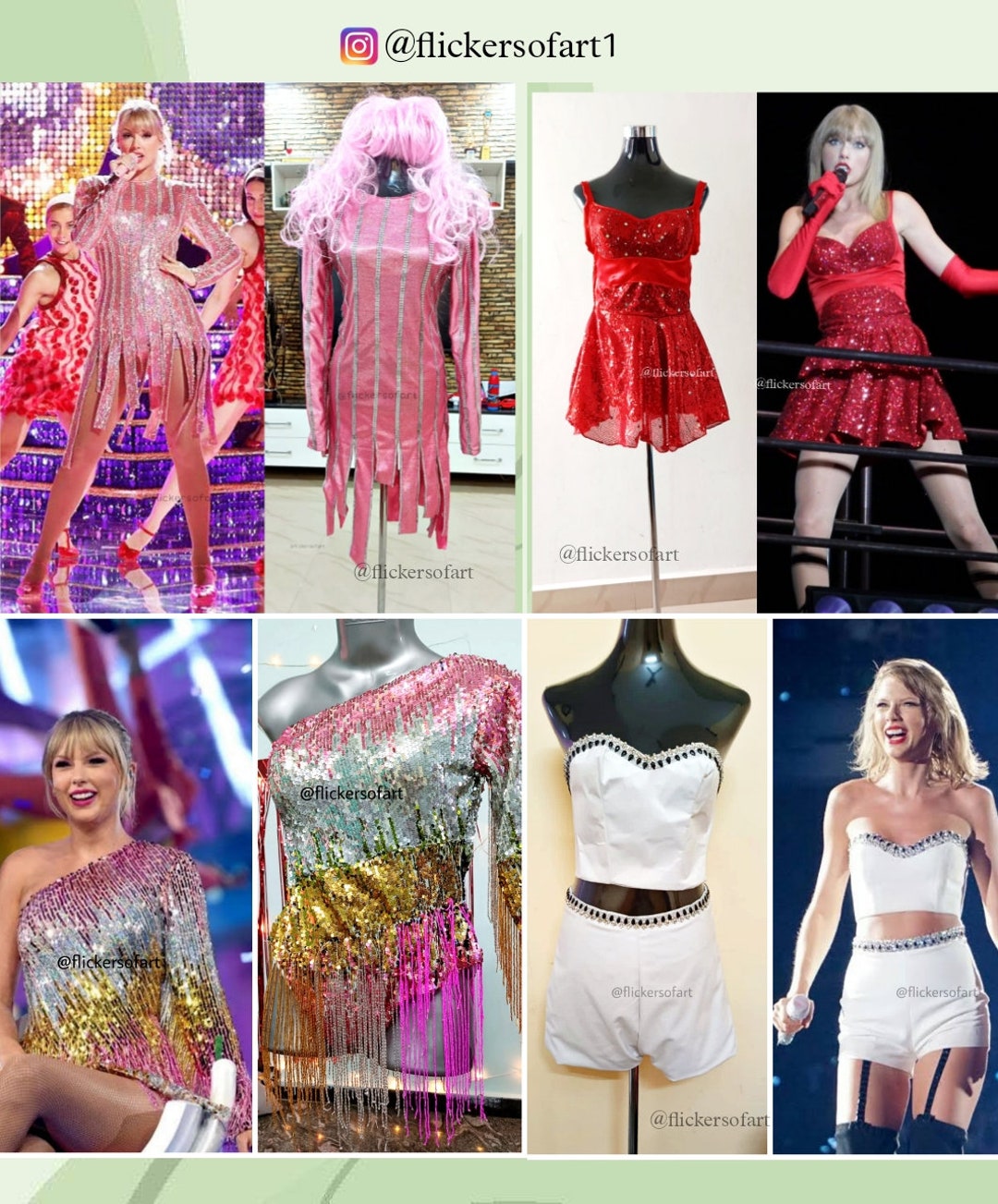Taylor Swift 1989 Outfits For Sale – For fashion-conscious individuals, buying second-hand is a way to express their personal style while also supporting sustainable practices. It’s a constant negotiation, where both parties seek to align their perceptions of worth and reach an agreement that satisfies both sides. The notion suggests a world where anything and everything, regardless of its intrinsic value, can be bought, sold, or traded. While some people may be hesitant to purchase pre-owned electronics due to concerns about quality or reliability, the second-hand market for electronics has become increasingly trustworthy. Online platforms also give buyers and sellers the chance to evaluate one another through reviews and ratings, adding an extra layer of trust and security to the transaction. Thrift stores often carry a wide variety of goods, from clothing and accessories to furniture, books, and electronics, and each item comes with its own story. People are not just looking for things that work well; they want products that elevate their environment and their experiences. For sale, it seems like a simple phrase, yet it carries with it an array of possibilities, emotions, and decisions that can shape someone’s life. Each item was unique, and the quality was immediately apparent to the buyer. Second-hand goods for sale have become an integral part of today’s economy, a trend that transcends geographic, economic, and cultural boundaries. A piece of furniture, for instance, may hold sentimental value simply because it’s been in the family for generations. In a world where everything is for sale, it’s easy for the vulnerable and the marginalized to be taken advantage of. The closing process also involves transferring the business’s assets, such as inventory, property, intellectual property, and customer contracts, to the new owner. Beyond practical reasons, the appeal of quality goods for sale also lies in the sense of pride and satisfaction that comes from owning something well-made. Yet, despite this shift, the appeal of quality craftsmanship has not waned. Additionally, second-hand furniture allows buyers to find unique items that may not be available in traditional furniture stores. Another aspect that contributes to the appeal of quality goods for sale is the level of detail and attention given to the design. It’s a small but significant way to make a positive impact on the planet, especially when one considers the volume of waste generated by fast fashion, electronic waste, and disposable goods. Whether it’s an item, a service, or even a person, the act of being “for sale” represents a moment of transition, a shift from one stage of life to another. Despite the many advantages of buying and selling second-hand goods, there are some challenges that both buyers and sellers must navigate.

Best Taylor Swift 1989 Outfits (all from amazon!) » Sequins & Satin
20% off first ordershop now, pay latercustomer service focused

1989 eras tour outfit Taylor swift tour outfits, Taylor outfits
20% off first ordershop now, pay latercustomer service focused
:upscale()/2023/04/14/711/n/1922564/1d6eea3d327fd1ea_GettyImages-1474520608.jpg)
Taylor Swift's Eras Tour Costumes PS Fashion
20% off first ordershop now, pay latercustomer service focused

Taylor Swift 1989 Outfits — Weeno Social Party Planning Made Easy
20% off first ordershop now, pay latercustomer service focused

1989 Tour Outfit Me Outfit Taylor Swift Outfits Taylor Etsy
20% off first ordershop now, pay latercustomer service focused

1989 Taylor Swift Eras Tour Outfits A Fashion Evolution
20% off first ordershop now, pay latercustomer service focused

Taylor Swift 1989 Outfits for Your Next Concert or Themed Party
20% off first ordershop now, pay latercustomer service focused

Taylor Swift The 1989 world tour Long live taylor swift, Taylor swift
20% off first ordershop now, pay latercustomer service focused

Taylor Swift's 1989 Tour Moments Glamour
20% off first ordershop now, pay latercustomer service focused

Taylor Swift's 12 Best Outfits From The 1989 World Tour, 40 OFF
20% off first ordershop now, pay latercustomer service focused
They are intended to last for a limited amount of time, after which they become outdated, broken, or no longer functional. Regardless of the reason, the sale of a business is an event that requires careful planning, transparent communication, and strategic negotiations. For environmentally conscious consumers, buying second-hand is not just a cost-effective choice, but a way to make a positive contribution to the planet. Whether it’s a vintage armchair, a gently used dining table, or a piece of mid-century modern furniture, second-hand furniture can be both functional and stylish. Every click, every like, every follow, is part of an ongoing transaction. The adage “you get what you pay for” rings especially true in the realm of quality goods. The concept of a circular economy, where products are reused and repurposed instead of discarded, is central to the appeal of second-hand goods. Additionally, many second-hand items are still in excellent condition, having been gently used or well-maintained by their previous owners, further enhancing the appeal of these products. In times of financial hardship, such as during recessions or periods of high unemployment, more people may turn to second-hand goods as a way to save money. Economic downturns, for example, can influence the types of businesses that are put up for sale, as struggling companies may look to exit the market. This practice is an essential aspect of sustainability, as it helps conserve resources and reduces the amount of waste sent to landfills. But even as we wrestle with the implications of living in a world where everything is for sale, we also see that this reality is not entirely negative. Websites like eBay, Craigslist, Facebook Marketplace, and Poshmark have made it easier than ever for individuals to sell their unwanted items and for buyers to find exactly what they are looking for. The concept of quality, however, is not a one-size-fits-all. Social media platforms, for example, offer users a chance to buy into their own identity, to curate a version of themselves that is more appealing, more desirable, more marketable. A well-made frying pan or a durable pair of boots might not have the cachet of a designer handbag, but their value lies in their functionality and reliability. Second-hand goods for sale have become an integral part of today’s economy, a trend that transcends geographic, economic, and cultural boundaries. By choosing second-hand goods, consumers can help reduce waste, conserve resources, and lessen the demand for new production. It’s a world where even personal growth, self-actualization, and emotional healing are framed as commodities, available for purchase at any time, but only if you’re willing to pay the price. When someone buys a second-hand item, whether it’s a piece of furniture passed down through generations or a retro jacket from a bygone era, they are not just acquiring an object; they are connecting to a story, a memory, or a cultural moment.
However, it’s also important to recognize the darker side of this freedom. The struggle is not in resisting the marketplace entirely, but in finding balance, in ensuring that the things that truly matter cannot be bought, sold, or traded. People can be bought and sold in the form of labor, for example, and loyalty can be traded for material gain. This sense of connection can also extend to the broader culture of quality goods, where consumers and creators share a commitment to excellence and a desire to preserve the craft and tradition behind these products. Many factors can influence the negotiation, such as the business’s financial performance, industry trends, and the level of interest from other buyers. The culture of buying second-hand goods is rapidly shifting in the modern world, particularly among younger generations. But the financial aspect is only one part of the equation. For the buyer, acquiring such a piece may carry with it the honor of preserving a legacy, or the satisfaction of adding a unique, timeless item to their own collection. This can bring about feelings of uncertainty, as there’s no guarantee that the right buyer or partner will come along. These generations are more aware of the environmental impact of fast fashion, disposable goods, and the need to adopt more sustainable practices. Similarly, a quality suit made from fine wool will age gracefully, developing a patina that speaks to its craftsmanship. These platforms allow buyers to browse listings, access detailed business profiles, and initiate contact with sellers, all from the comfort of their own home. Vintage clothing, in particular, has gained a significant following, with people seeking out unique, one-of-a-kind pieces that cannot be found in mainstream stores. This desire for items with character and a story behind them has contributed to the growing appeal of second-hand goods. As society has evolved, the scale of production has expanded, and many quality goods are now mass-produced or distributed through large retail chains. Legal experts are often involved at this stage to ensure that the transaction is conducted in compliance with all relevant laws and regulations. The environmental benefits of buying second-hand goods go beyond just reducing the need for new production. They can assist in determining the right price for the business, marketing it to potential buyers, and managing the negotiation process. By choosing second-hand goods, consumers can help reduce waste, conserve resources, and lessen the demand for new production. As more people embrace the idea that everything has value, second-hand goods will continue to be a central part of the way
Quality goods for sale have always held a special place in markets around the world, captivating consumers with their promise of durability, performance, and timeless appeal.